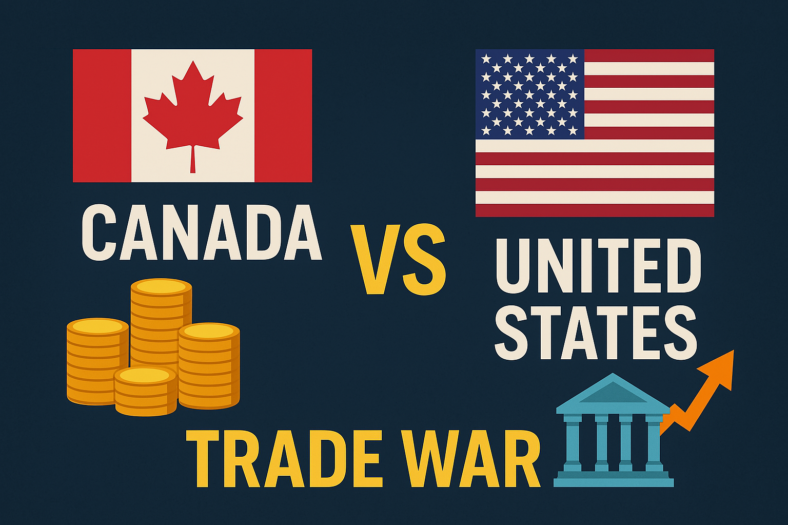Navigating the realm of personal loans in Canada can be a daunting task. With numerous financial institutions, varying interest rates, and an array of terms and conditions, finding the best personal loan tailored to your needs requires careful consideration and research. Whether you’re seeking funds for home renovations, debt consolidation, or unexpected expenses, understanding the intricacies of personal loans is crucial to making informed financial decisions.
In this comprehensive guide, we’ll delve into the intricacies of personal loans in Canada, exploring the key factors to consider when choosing a loan provider, understanding the different types of personal loans available, deciphering interest rates and fees, and navigating the application process with confidence. Whether you’re a seasoned borrower or new to the world of personal finance, this guide aims to equip you with the knowledge and tools necessary to secure the best personal loan for your unique circumstances.
Join us as we embark on a journey through the landscape of personal loans in Canada, empowering you to make informed choices and achieve your financial goals with clarity and confidence.
Best Personal Loans in Canada – Our Top Picks
What are personal loans?
Personal loans are a type of installment loan offered by financial institutions, such as banks, credit unions, and online lenders, to individuals for various purposes. Unlike specific loans designed for purchasing homes (mortgages) or vehicles (auto loans), personal loans provide borrowers with flexibility in how they use the funds. These loans are typically unsecured, meaning they are not backed by collateral like a house or car.
Here are key characteristics of personal loans:
Purpose: Personal loans can be used for a variety of purposes, including debt consolidation, home improvements, medical expenses, weddings, vacations, or any other personal need.
Fixed Amount: Lenders offer borrowers a fixed amount of money, usually ranging from a few hundred to tens of thousands of dollars, depending on the borrower’s creditworthiness and financial situation.
Fixed Term: Personal loans come with a predetermined term, typically ranging from one to seven years. During this time, borrowers repay the loan through regular monthly installments, which include both principal and interest.
Interest Rates: Personal loans may have fixed or variable interest rates. Fixed-rate loans maintain the same interest rate throughout the loan term, providing predictability in monthly payments. Variable-rate loans, on the other hand, may fluctuate based on market conditions, potentially affecting monthly payments.
Credit Check: Lenders assess borrowers’ creditworthiness by reviewing their credit history and score before approving a personal loan. A higher credit score increases the likelihood of approval and may qualify borrowers for lower interest rates.
No Collateral: Unlike secured loans, such as mortgages or auto loans, personal loans do not require collateral. This means borrowers don’t risk losing assets if they default on the loan. However, failure to repay can negatively impact credit scores and lead to collection efforts by the lender.
Origination Fees: Some lenders charge origination fees, which are upfront fees deducted from the loan amount. Borrowers should consider these fees when calculating the total cost of borrowing.
Understanding these fundamental aspects of personal loans is essential for borrowers to make informed decisions and choose the loan that best suits their financial needs and circumstances.
How do personal loans work?
Personal loans work by providing borrowers with a lump sum of money that they repay over time, typically in fixed monthly installments. Here’s a step-by-step breakdown of how personal loans work:
Application: Borrowers begin by applying for a personal loan with a lender. This can be done online, over the phone, or in person at a bank or credit union branch. The application process typically involves providing personal information, such as name, address, employment details, income, and sometimes documentation like pay stubs or tax returns.
Credit Check: After receiving the loan application, the lender assesses the borrower’s creditworthiness by checking their credit history and score. This helps the lender determine the borrower’s likelihood of repaying the loan on time and influences the loan terms, including the interest rate and loan amount.
Loan Approval: If the borrower meets the lender’s eligibility criteria and credit requirements, the loan is approved. The lender informs the borrower of the approved loan amount, interest rate, term, and any other relevant terms and conditions.
Funds Disbursement: Once the loan is approved, the lender disburses the funds to the borrower. This is typically done via direct deposit into the borrower’s bank account, though some lenders may offer other disbursement methods like checks or prepaid cards.
Repayment: Borrowers repay the loan over time according to the terms outlined in the loan agreement. This includes making regular monthly payments that consist of both principal (the amount borrowed) and interest (the cost of borrowing). The loan term, interest rate, and loan amount determine the amount of each installment.
Interest Accrual: Interest accrues on the outstanding loan balance over time. For fixed-rate loans, the interest rate remains constant throughout the loan term, while for variable-rate loans, the interest rate may fluctuate based on market conditions.
Early Repayment: Borrowers have the option to repay the loan early, either in part or in full, before the end of the loan term. Some lenders may charge prepayment penalties for early repayment, so borrowers should review the terms of their loan agreement to understand any associated fees.
Completion of Repayment: Once the borrower completes all scheduled loan payments, including any interest accrued, the loan is considered fully repaid, and the borrower no longer owes any money to the lender.
By understanding the mechanics of personal loans, borrowers can make informed decisions, choose the right loan for their needs, and manage their finances effectively throughout the repayment process.
Pros and cons of personal loans
Personal loans offer advantages and disadvantages that borrowers should consider before deciding whether to pursue this form of financing. Let’s explore the pros and cons:
Pros:
Flexibility: Personal loans can be used for various purposes, providing borrowers with flexibility in how they use the funds. Whether it’s consolidating debt, covering unexpected expenses, making home improvements, or financing a wedding, personal loans offer versatility in meeting financial needs.
No Collateral: Most personal loans are unsecured, meaning borrowers don’t need to pledge collateral, such as a house or car, to qualify. This reduces the risk of losing assets in the event of default.
Fixed Interest Rates: Many personal loans come with fixed interest rates, offering predictability in monthly payments throughout the loan term. This can be beneficial for budgeting, as borrowers know exactly how much they need to repay each month.
Quick Access to Funds: Personal loans often have a streamlined application process, and once approved, funds can be disbursed relatively quickly, sometimes within a few business days. This makes personal loans suitable for urgent financial needs.
Debt Consolidation: Personal loans can be used to consolidate high-interest debt, such as credit card balances, into a single, more manageable loan with a lower interest rate. This can potentially save money on interest and simplify debt repayment.
Cons:
Interest Rates and Fees: While personal loans can offer competitive interest rates, especially for borrowers with excellent credit, they may still come with higher rates compared to secured loans like mortgages or auto loans. Additionally, some lenders charge origination fees or other upfront costs, increasing the overall cost of borrowing.
Impact on Credit Score: Applying for a personal loan results in a hard inquiry on the borrower’s credit report, which can temporarily lower their credit score. Additionally, missing loan payments or defaulting on the loan can have a negative impact on the borrower’s creditworthiness.
Risk of Default: Since personal loans are unsecured, lenders rely solely on the borrower’s promise to repay the loan. If borrowers fail to make timely payments or default on the loan, they risk damaging their credit score and facing collection efforts by the lender.
Loan Amount Limitations: Personal loan amounts may be limited based on the borrower’s creditworthiness and income. Borrowers with lower credit scores or income levels may qualify for smaller loan amounts, which may not fully meet their financial needs.
Potential for Overborrowing: Easy access to funds through personal loans can tempt some borrowers to borrow more than they can afford to repay. This can lead to financial strain and difficulty meeting loan obligations.
By weighing these pros and cons, borrowers can make informed decisions about whether a personal loan aligns with their financial goals and circumstances. It’s essential to carefully consider the terms and conditions of any loan offer and assess affordability before proceeding with a personal loan application.
What types of personal loans are available in Canada?
In Canada, several types of personal loans are available to meet the diverse financial needs of borrowers. These loans vary in terms of structure, purpose, and eligibility criteria. Here are some common types of personal loans available in Canada:
Unsecured Personal Loans: Unsecured personal loans do not require collateral and are based solely on the borrower’s creditworthiness. Lenders assess factors such as credit score, income, employment history, and debt-to-income ratio to determine eligibility and loan terms. These loans are versatile and can be used for various purposes, including debt consolidation, home improvements, medical expenses, and vacations.
Secured Personal Loans: Secured personal loans are backed by collateral, such as a vehicle, home equity, or savings account. Because they involve less risk for lenders, secured loans may offer lower interest rates and higher loan amounts compared to unsecured loans. However, borrowers risk losing the collateral if they default on the loan.
Debt Consolidation Loans: Debt consolidation loans are specifically designed to help borrowers consolidate multiple high-interest debts, such as credit card balances or other loans, into a single loan with a lower interest rate. By consolidating debts, borrowers can simplify their finances and potentially save money on interest payments.
Home Equity Loans or Lines of Credit: Homeowners may qualify for personal loans secured by their home equity. Home equity loans provide borrowers with a lump sum of money, while home equity lines of credit (HELOCs) offer a revolving line of credit that can be accessed as needed. These loans typically have lower interest rates than unsecured personal loans but require borrowers to use their home as collateral.
Installment Loans: Installment loans involve borrowing a fixed amount of money and repaying it over a predetermined period through regular monthly installments. These loans may be secured or unsecured and can be used for various purposes, including financing large purchases or covering unexpected expenses.
Payday Loans: Payday loans are short-term, high-cost loans designed to provide borrowers with quick access to cash until their next payday. These loans typically have high interest rates and fees and are intended for emergency situations. However, they can lead to a cycle of debt if not repaid promptly.
Personal Lines of Credit: Personal lines of credit function similarly to credit cards, allowing borrowers to borrow funds up to a predetermined credit limit. Borrowers can withdraw funds as needed and only pay interest on the amount borrowed. Personal lines of credit offer flexibility and can be used for various expenses, but they may come with variable interest rates and require regular minimum payments.
Understanding the differences between these types of personal loans can help borrowers choose the most suitable option based on their financial goals, creditworthiness, and borrowing needs. It’s essential to carefully review the terms and conditions of any loan offer and consider factors such as interest rates, fees, repayment terms, and potential risks before making a decision.
What loan terms are people choosing?
The loan terms that people choose can vary based on their individual financial circumstances, borrowing needs, and preferences. However, several common loan terms are popular among borrowers in Canada. Here are some typical loan terms that people may choose:
Loan Duration: The duration, or term, of a loan refers to the length of time over which the borrower agrees to repay the loan. Common loan durations for personal loans in Canada typically range from one to seven years. Shorter loan terms result in higher monthly payments but lower overall interest costs, while longer loan terms lead to lower monthly payments but higher total interest payments over the life of the loan.
Fixed vs. Variable Interest Rates: Borrowers may choose between loans with fixed interest rates, which remain constant throughout the loan term, or variable interest rates, which can fluctuate based on market conditions. Fixed-rate loans offer predictability in monthly payments, making budgeting easier, while variable-rate loans may offer lower initial rates but can increase over time, potentially impacting affordability.
Loan Amount: The loan amount refers to the total sum of money borrowed by the borrower. Loan amounts can vary widely depending on the borrower’s financial situation, creditworthiness, and borrowing needs. Some lenders offer small personal loans starting from a few hundred dollars, while others may provide larger loan amounts of tens of thousands of dollars or more.
Repayment Frequency: Borrowers may have the option to choose the frequency of loan repayments, such as monthly, biweekly, or weekly payments. Monthly payments are the most common repayment frequency for personal loans in Canada, providing borrowers with a predictable repayment schedule aligned with their monthly budget.
Prepayment Options: Some lenders offer flexibility in prepayment options, allowing borrowers to make additional payments or repay the loan in full before the end of the loan term without incurring prepayment penalties. Prepayment options can help borrowers save on interest costs and repay the loan faster.
Origination Fees and Other Charges: Borrowers should also consider any upfront fees, such as origination fees or administrative charges, associated with the loan. These fees can vary among lenders and impact the total cost of borrowing.
The loan terms that people choose depend on various factors, including their financial goals, preferences for repayment flexibility, and ability to afford monthly payments. It’s essential for borrowers to carefully review and compare loan offers from multiple lenders, consider their individual financial situation, and choose loan terms that align with their needs and objectives.
How to find the best personal loans in Canada
Finding the best personal loans in Canada requires thorough research and comparison of loan offers from various lenders. Here’s a step-by-step guide to help you find the best personal loan for your needs:
Assess Your Financial Situation: Before you start searching for a personal loan, evaluate your financial situation, including your credit score, income, existing debt obligations, and borrowing needs. Understanding your financial position will help you determine the type of loan you qualify for and the loan amount you can afford to borrow.
Identify Your Borrowing Needs: Determine the purpose of the loan and the amount of money you need to borrow. Whether you’re consolidating debt, covering home renovations, financing a major purchase, or addressing unexpected expenses, knowing your borrowing needs will guide your search for the right loan.
Research Lenders: Research reputable lenders that offer personal loans in Canada. Consider traditional financial institutions such as banks and credit unions, as well as online lenders and alternative lending platforms. Read reviews, check their accreditation and customer service ratings, and compare their loan products, interest rates, fees, and terms.
Compare Loan Features: Once you’ve identified potential lenders, compare the features of their personal loan products. Pay attention to the following factors:
- Interest Rates: Compare the interest rates offered by different lenders. Look for competitive rates that fit your budget and repayment capacity.
- Fees and Charges: Consider any upfront fees, such as origination fees, application fees, or prepayment penalties. Factor these costs into the total cost of borrowing.
- Loan Terms: Review the loan terms, including the loan duration, repayment frequency, and flexibility in repayment options.
- Eligibility Criteria: Check the lender’s eligibility requirements, such as minimum credit score, income thresholds, and employment history, to ensure you meet the criteria for approval.
Check for Special Offers: Some lenders may offer special promotions or discounts on personal loans, such as discounted interest rates or waived fees for new customers. Take advantage of these offers if they align with your borrowing needs and financial goals.
Get Prequalified: Many lenders offer prequalification or preapproval processes that allow you to check your eligibility for a personal loan without impacting your credit score. Submitting prequalification applications with multiple lenders can help you compare loan offers and negotiate better terms.
Read the Fine Print: Before finalizing a loan agreement, carefully review the terms and conditions, including the loan contract, disclosure statements, and any additional documentation provided by the lender. Pay attention to the interest rate, repayment schedule, fees, penalties, and any other terms that may affect the cost and terms of the loan.
Apply for the Loan: Once you’ve selected the best personal loan offer, complete the loan application process with the chosen lender. Provide accurate information and documentation required for the application, and await the lender’s decision on your loan approval.
By following these steps and conducting thorough research, you can find the best personal loan in Canada that meets your borrowing needs, offers competitive terms, and fits within your financial goals and budget.
Common fees and interest rates for personal loans
Common fees and interest rates for personal loans in Canada can vary depending on the lender, the borrower’s creditworthiness, the loan amount, and other factors. Here are some typical fees and interest rates associated with personal loans:
Interest Rates: Interest rates for personal loans in Canada can range from as low as around 4% to as high as 36% or more, depending on various factors such as the borrower’s credit score, income, loan term, and prevailing market conditions. Generally, borrowers with higher credit scores and lower perceived risk are offered lower interest rates, while those with lower credit scores may face higher rates to compensate for the increased risk to the lender.
Origination Fees: Origination fees, also known as processing fees or administrative fees, are upfront charges imposed by lenders to cover the costs of processing the loan application and disbursing funds. Origination fees typically range from 1% to 8% of the loan amount and may be deducted from the loan proceeds or added to the total loan amount.
Late Payment Fees: Late payment fees are charged by lenders when borrowers fail to make their loan payments by the due date. These fees are typically a flat amount or a percentage of the overdue payment and can vary among lenders. It’s essential for borrowers to understand the late payment fee structure outlined in the loan agreement and make timely payments to avoid additional charges.
Prepayment Penalties: Some lenders impose prepayment penalties or early repayment fees on borrowers who repay their personal loans before the end of the loan term. Prepayment penalties are designed to compensate the lender for the interest income lost when borrowers pay off their loans early. Borrowers should carefully review the loan terms to determine if prepayment penalties apply and consider the potential impact on the total cost of borrowing.
Annual Percentage Rate (APR): The annual percentage rate (APR) represents the total cost of borrowing, including interest rates, fees, and other charges, expressed as an annualized percentage. The APR provides borrowers with a standardized measure to compare the cost of different loan offers from various lenders. When comparing personal loans, borrowers should look beyond the advertised interest rate and consider the APR to assess the true cost of borrowing.
Loan Insurance Premiums: Some lenders offer optional loan insurance or payment protection insurance to borrowers, which provides coverage in case of events such as job loss, disability, or death that prevent borrowers from making loan payments. Loan insurance premiums are typically added to the loan amount and may increase the total cost of borrowing.
It’s essential for borrowers to carefully review and understand the fees and interest rates associated with personal loans before committing to a loan agreement. By comparing loan offers from multiple lenders and considering the total cost of borrowing, borrowers can make informed decisions and choose the most affordable personal loan option that aligns with their financial goals and budget.
Requirements to apply for a personal loan
To apply for a personal loan in Canada, borrowers typically need to meet certain requirements set by lenders. While specific requirements may vary among lenders, here are the common criteria and documentation needed to apply for a personal loan:
Age: Borrowers must be at least 18 years old to apply for a personal loan in Canada. Some lenders may have a minimum age requirement of 19 or 21.
Residency: Borrowers must be Canadian citizens or permanent residents residing in Canada with a valid Canadian address. Non-residents may have limited options for personal loans and may need to provide additional documentation.
Income: Lenders assess borrowers’ ability to repay the loan by evaluating their income. Borrowers typically need to provide proof of income, such as pay stubs, tax returns, or bank statements, to demonstrate their financial stability and ability to afford loan payments.
Employment: Borrowers should have a steady source of income, such as employment or self-employment, to qualify for a personal loan. Lenders may require verification of employment, including employment history and contact information for the employer.
Credit History: Lenders evaluate borrowers’ creditworthiness by reviewing their credit history and credit score. While some lenders offer personal loans to borrowers with less-than-perfect credit, a higher credit score typically increases the likelihood of loan approval and may qualify borrowers for lower interest rates.
Debt-to-Income Ratio: Lenders consider borrowers’ debt-to-income ratio, which compares their monthly debt payments to their gross monthly income. A lower debt-to-income ratio indicates a borrower’s ability to manage additional debt responsibly and may improve their chances of loan approval.
Identification: Borrowers need to provide valid identification, such as a driver’s license, passport, or government-issued ID, to verify their identity.
Bank Account: Most lenders require borrowers to have a Canadian bank account to facilitate loan disbursement and repayment. Borrowers may need to provide bank statements or account details as part of the application process.
Loan Purpose: Borrowers may need to specify the purpose of the loan, such as debt consolidation, home improvements, medical expenses, or other personal needs, depending on the lender’s requirements.
Documentation: Borrowers should be prepared to provide documentation to support their loan application, including proof of identity, income, employment, and residency. Additional documentation may be required depending on the lender’s specific requirements and the borrower’s individual circumstances.
Before applying for a personal loan, borrowers should carefully review the eligibility criteria and documentation requirements of potential lenders to ensure they meet the necessary requirements. By preparing the required documentation in advance and maintaining a good credit history, borrowers can improve their chances of loan approval and secure favorable terms and interest rates.
Alternatives to personal loans
There are several alternatives to personal loans that individuals can consider depending on their financial needs, circumstances, and preferences. Here are some common alternatives:
Credit Cards: Credit cards offer revolving lines of credit that can be used for various purchases and expenses. Borrowers can pay off their credit card balances over time, with the option to make minimum payments or pay in full each month. Credit cards may offer rewards, cashback, or other benefits, but they often come with higher interest rates compared to personal loans, especially if carrying a balance.
Home Equity Loans or Lines of Credit: Homeowners may leverage the equity in their homes to access funds through home equity loans or lines of credit. These secured loans use the home as collateral, allowing borrowers to borrow larger amounts at potentially lower interest rates compared to unsecured personal loans. However, borrowers risk losing their homes if they default on the loan.
Peer-to-Peer Lending: Peer-to-peer (P2P) lending platforms connect borrowers with individual investors willing to lend money. P2P loans may offer competitive interest rates and flexible terms, but borrowers typically need a good credit score to qualify. P2P lending can be an alternative to traditional bank loans, offering streamlined application processes and potentially faster funding.
Credit Union Loans: Credit unions are member-owned financial cooperatives that offer a variety of loan products, including personal loans, at competitive rates and terms. Credit unions may be more flexible in their lending criteria and offer personalized service to their members. Borrowers may find credit union loans to be more accessible and affordable compared to loans from traditional banks.
401(k) Loans: Employees with employer-sponsored retirement plans, such as 401(k) or RRSP accounts, may be eligible to borrow from their retirement savings through 401(k) loans or RRSP loans. These loans allow borrowers to access funds without undergoing a credit check, but they must repay the borrowed amount with interest, typically within a specified period. Borrowing from retirement accounts may have tax implications and could jeopardize long-term retirement savings if not repaid promptly.
Family or Friends: Borrowers may consider borrowing money from family members or friends as an alternative to traditional loans. While informal loans from loved ones may offer flexibility in terms and repayment arrangements, borrowers should approach such arrangements with caution to avoid straining relationships and clearly define the terms of the loan to prevent misunderstandings.
Savings or Emergency Funds: In some cases, individuals may opt to use their savings or emergency funds to cover expenses instead of taking out a loan. While depleting savings may not be ideal, it can be a cost-effective alternative to borrowing, as it avoids interest charges and debt obligations. Building and maintaining an emergency fund can provide financial security and reduce the need for borrowing in the future.
When considering alternatives to personal loans, individuals should weigh the pros and cons of each option, assess their financial situation and needs, and choose the solution that best aligns with their goals and circumstances. It’s essential to carefully review the terms, costs, and potential risks associated with any borrowing option before making a decision.
FAQs about best personal loans in Canada
A personal loan is a type of installment loan offered by financial institutions, such as banks, credit unions, and online lenders, to individuals for various purposes. It provides borrowers with a lump sum of money that is repaid over time, typically with interest, through fixed monthly installments.
To find the best personal loan in Canada, compare loan offers from multiple lenders, considering factors such as interest rates, fees, loan terms, eligibility criteria, and customer reviews. Choose a loan that aligns with your financial goals, borrowing needs, and budget.
When comparing personal loans, consider factors such as interest rates, fees (e.g., origination fees, late payment fees), loan terms (e.g., loan duration, repayment frequency), eligibility criteria (e.g., credit score, income requirements), and any special features or benefits offered by the lender.
Fixed interest rates remain constant throughout the loan term, providing predictability in monthly payments. Variable interest rates can fluctuate based on market conditions, potentially affecting monthly payments and the total cost of borrowing over time.
Improve your chances of getting approved for a personal loan by maintaining a good credit score, demonstrating stable income and employment, reducing existing debt, and providing accurate and complete documentation during the application process. Consider applying with a co-signer or offering collateral to strengthen your application if needed.
Yes, personal loans can be used for various purposes, including debt consolidation, home renovations, medical expenses, weddings, vacations, or any other personal need. However, it’s essential to use the funds responsibly and within your means to avoid financial strain.
The time it takes to receive funds from a personal loan can vary depending on the lender and the application process. Some lenders may disburse funds within a few business days of loan approval, while others may take longer. Be sure to inquire about the expected timeline when applying for a loan.
Yes, personal loans may come with various fees, including origination fees, late payment fees, prepayment penalties, and annual fees. Review the loan terms and conditions carefully to understand any applicable fees and factor them into the total cost of borrowing.
In conclusion, personal loans offer individuals in Canada a versatile and accessible means of financing various expenses and achieving their financial goals. Whether consolidating debt, funding home improvements, covering unexpected expenses, or pursuing personal aspirations, personal loans provide borrowers with the flexibility and support they need.
However, navigating the landscape of personal loans requires careful consideration of factors such as interest rates, fees, loan terms, and eligibility criteria. By conducting thorough research, comparing loan offers from multiple lenders, and understanding the terms and conditions of each loan, borrowers can make informed decisions and choose the best personal loan option that aligns with their needs and financial circumstances.
Furthermore, maintaining good credit, demonstrating stable income, and managing debt responsibly can improve borrowers’ chances of loan approval and secure more favorable loan terms. It’s essential for borrowers to borrow responsibly, only taking out loans they can afford to repay, and to use funds wisely to avoid financial strain.
Overall, personal loans in Canada provide individuals with the financial flexibility and support they need to navigate life’s challenges and opportunities. By understanding the intricacies of personal loans and making informed decisions, borrowers can harness the power of personal lending to achieve their financial aspirations and build a brighter financial future.




















